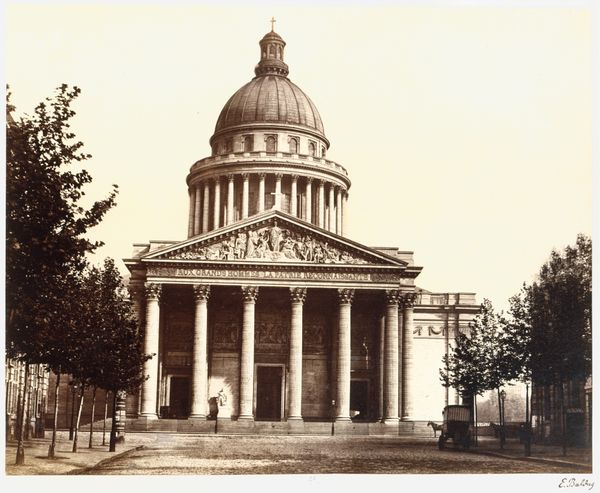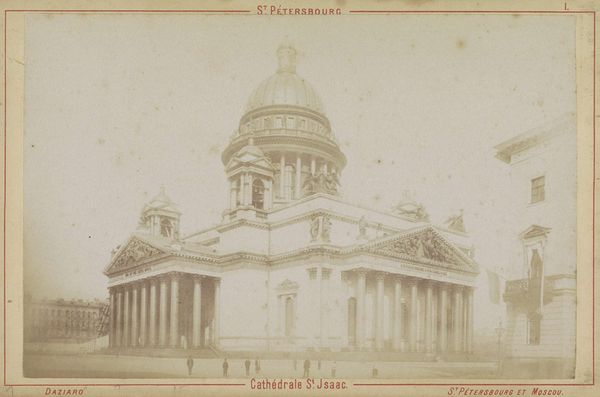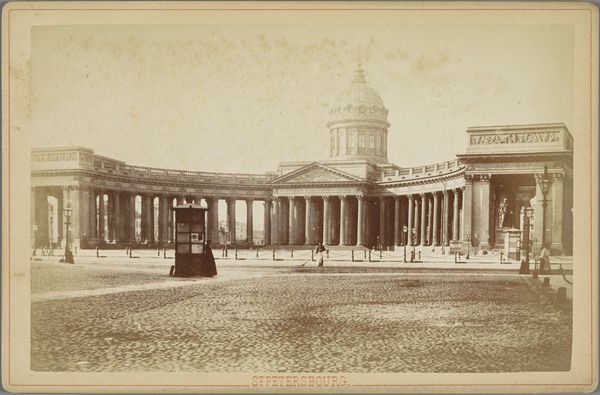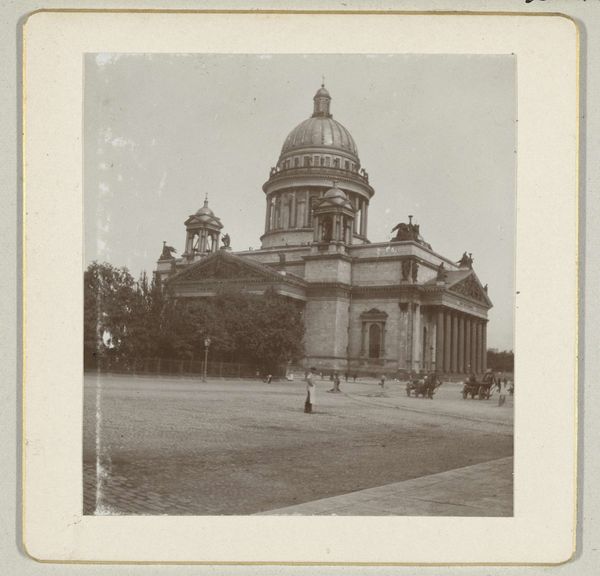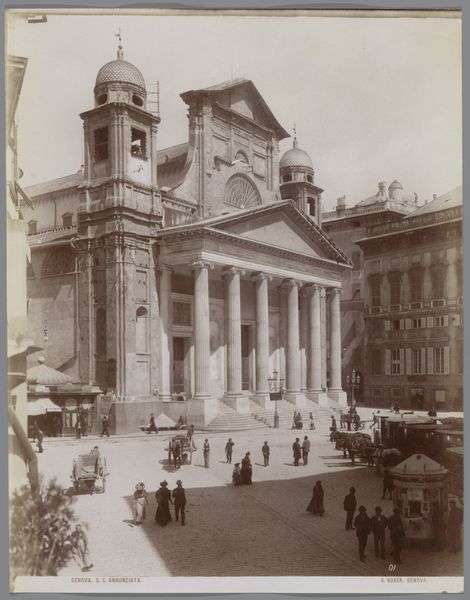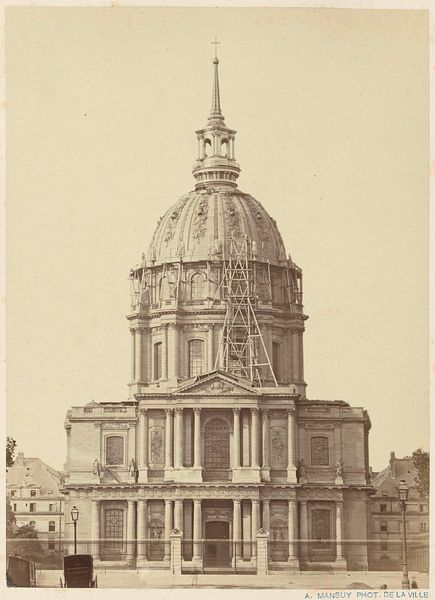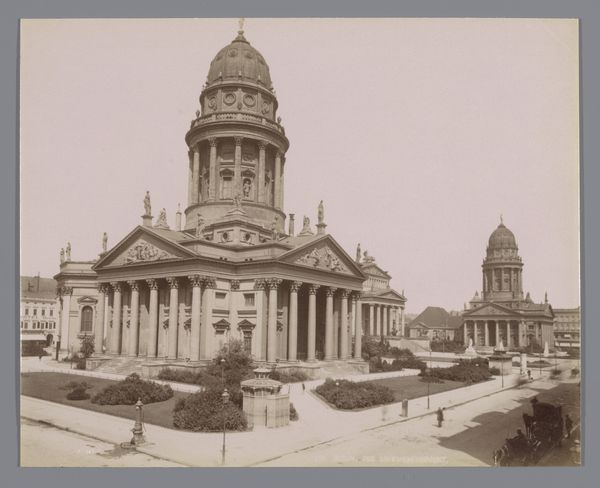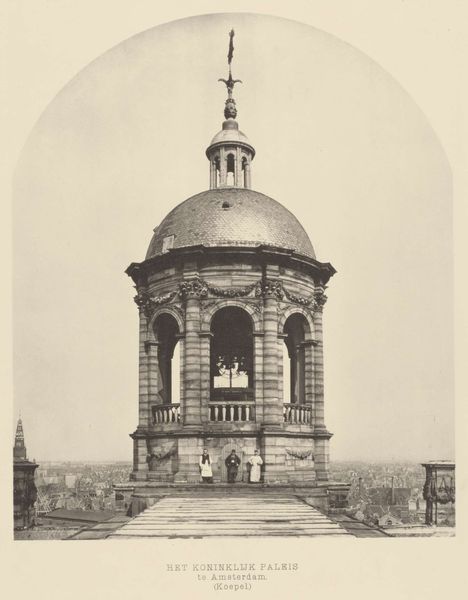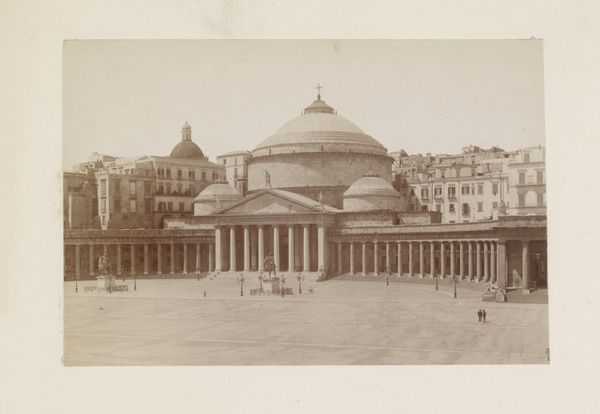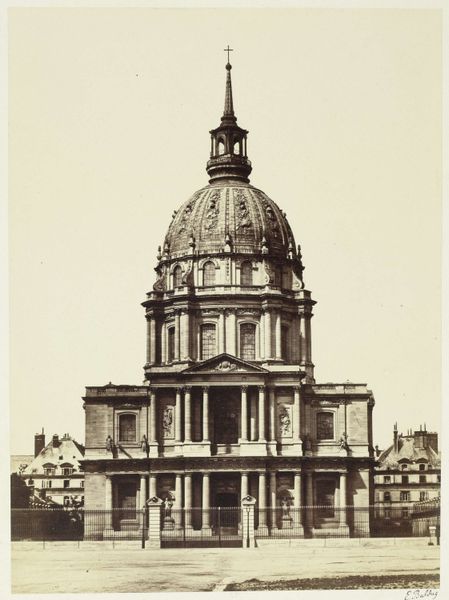
print, daguerreotype, photography, architecture
#
portrait
#
neoclacissism
# print
#
daguerreotype
#
historic architecture
#
photography
#
historical photography
#
19th century
#
cityscape
#
history-painting
#
architecture
#
realism
#
statue
Dimensions: height 335 mm, width 435 mm
Copyright: Rijks Museum: Open Domain
Editor: So, this is Édouard Baldus’ "Le Panthéon" from 1853, a photograph made using the daguerreotype process. It’s quite striking! The symmetry and clarity are remarkable. What's your interpretation? Curator: Notice first the materiality. Baldus, using the cutting-edge daguerreotype, captures not just an image but the very labor of architecture, the hewn stone and precise placement of each block. It is less about the ideal of neoclassicism and more about the social processes which construct this physical space. How do you think photography at this time changed artmaking, particularly architecture? Editor: That's a really interesting point. The photograph, in a way, democratizes the image of the Panthéon. It is accessible and reproducible, which, contrasts with the elite nature of architecture itself. Do you see this reproduction impacting the monument itself? Curator: Precisely. Think of the logistical endeavor: transporting heavy equipment, preparing the plates, timing the exposure. Baldus’ photograph transforms a monumental feat of engineering into an object of mass consumption. Does it perhaps render the physical space into merely an image, ready for purchase and possession? What does that say about Paris itself? Editor: That’s given me a lot to think about, especially the transformation of a tangible experience into a consumable image. Seeing it as a social process makes the work much more than a simple representation. Curator: Indeed. It urges us to question the power structures inherent in both the making and the representation of art, forcing a reevaluation of art production itself.
Comments
No comments
Be the first to comment and join the conversation on the ultimate creative platform.

